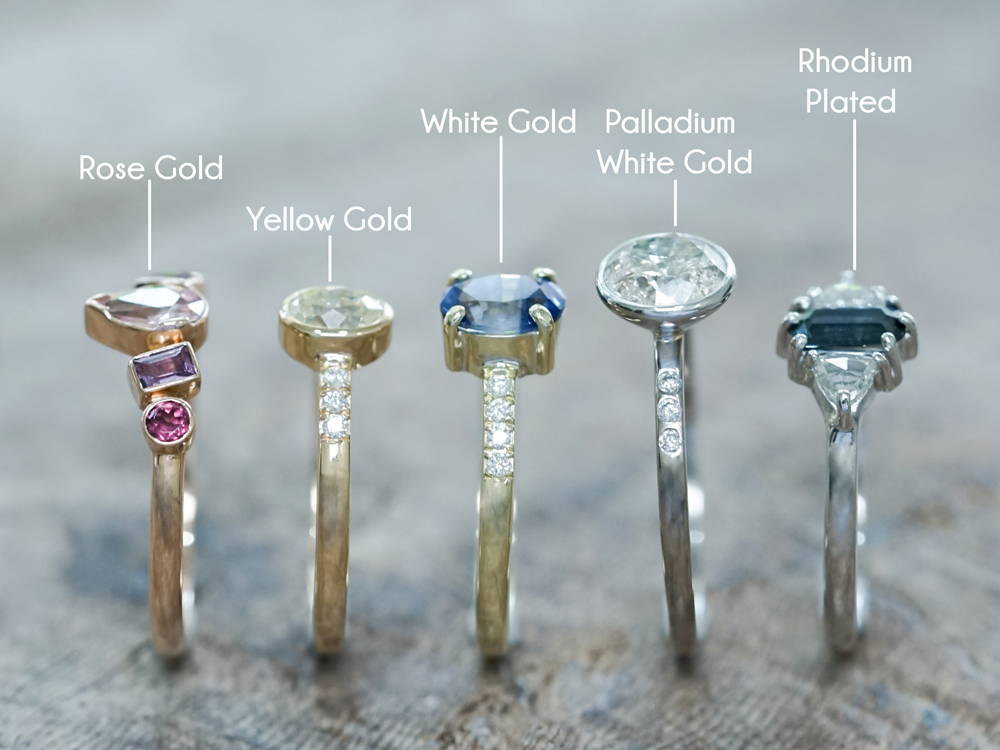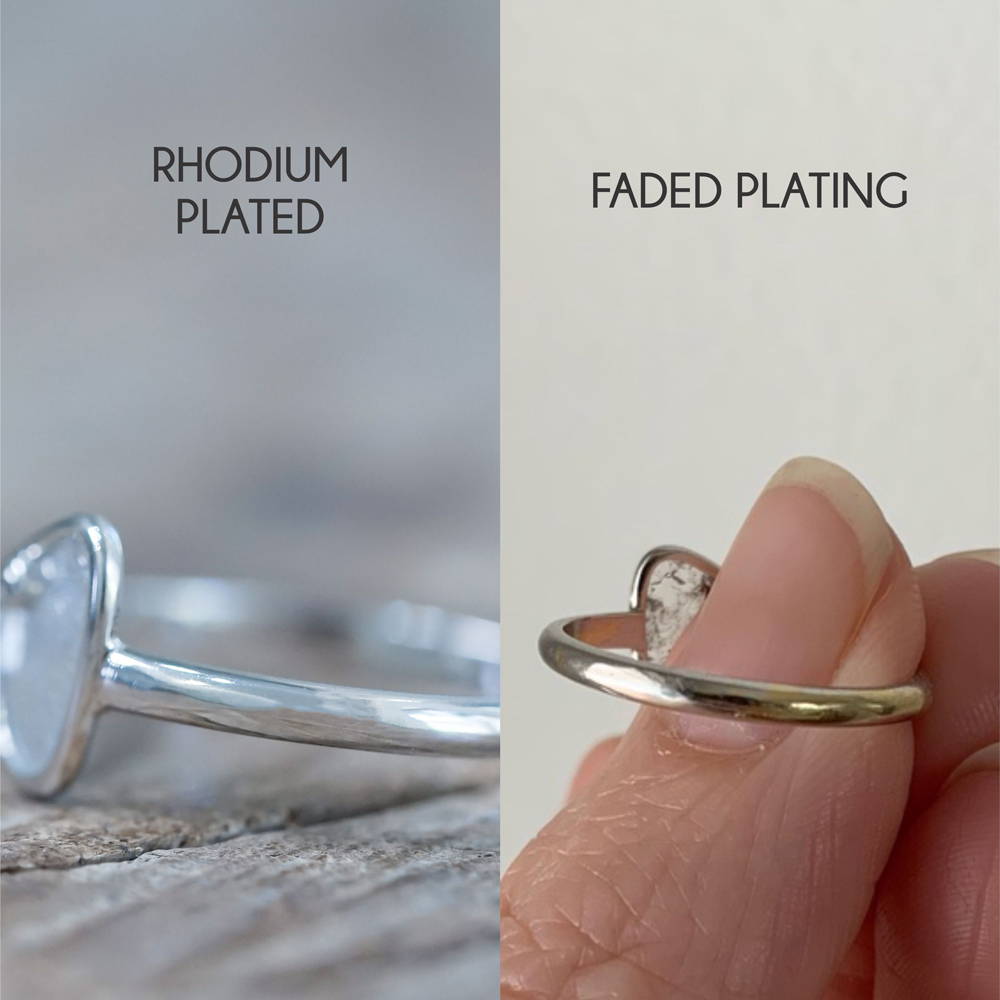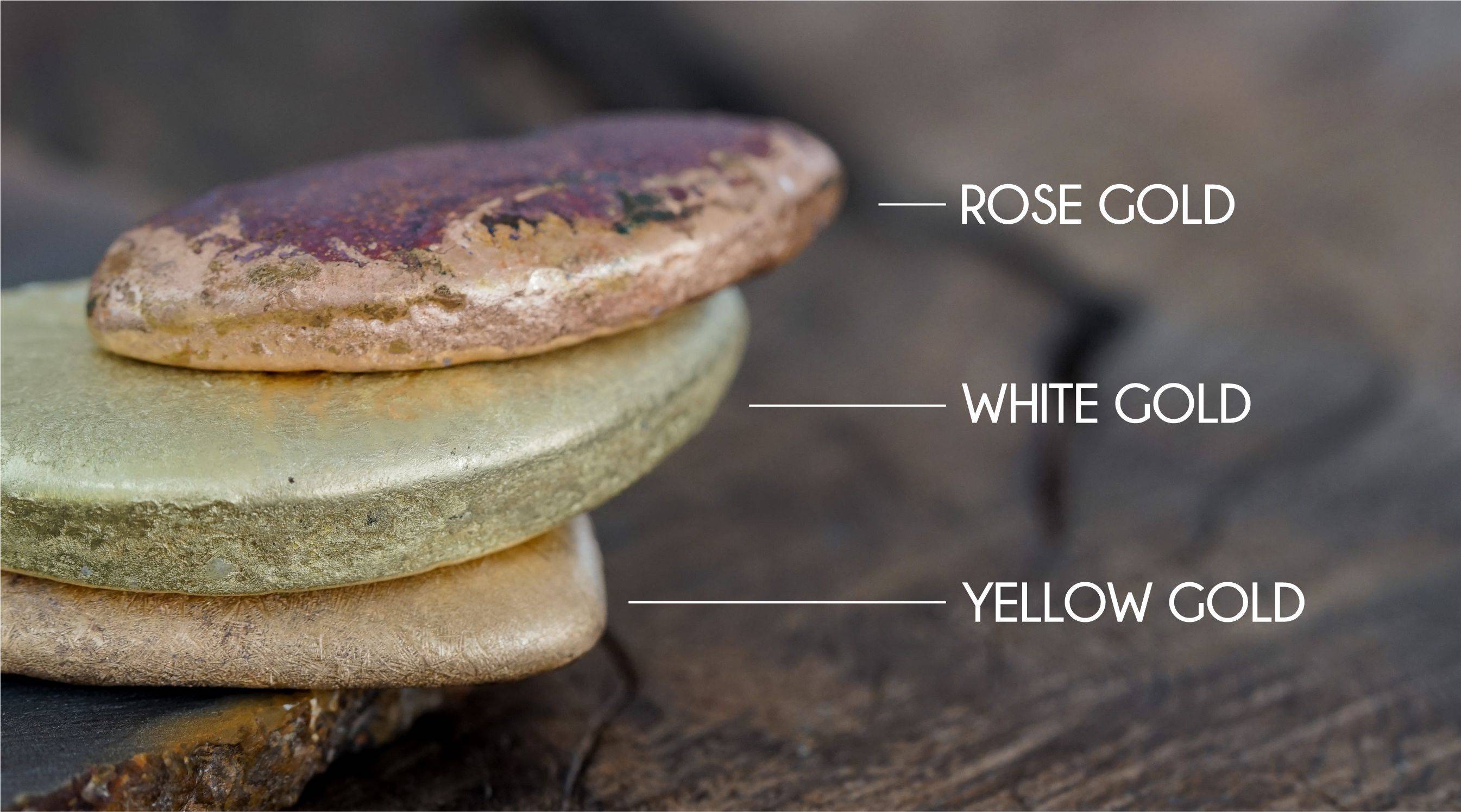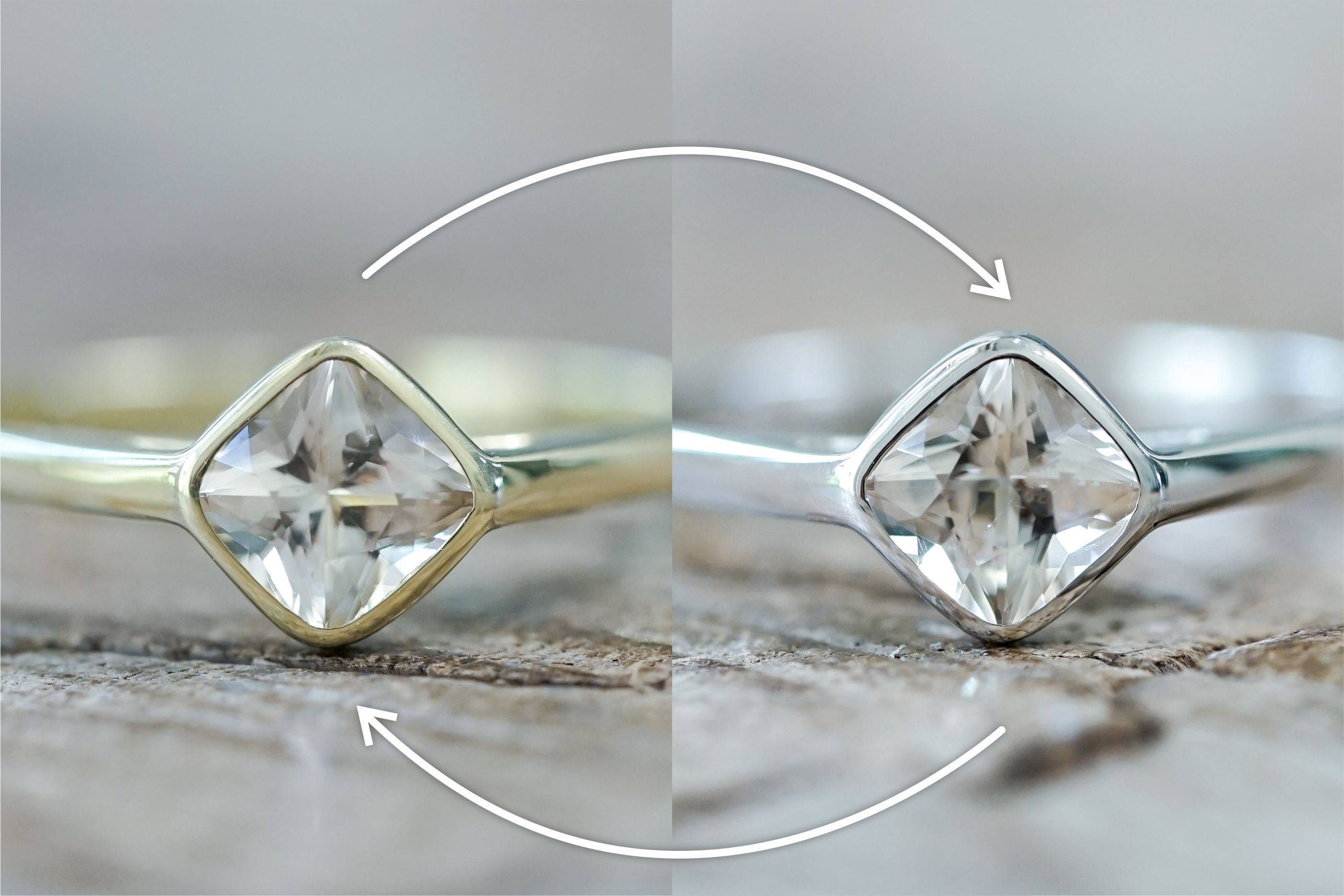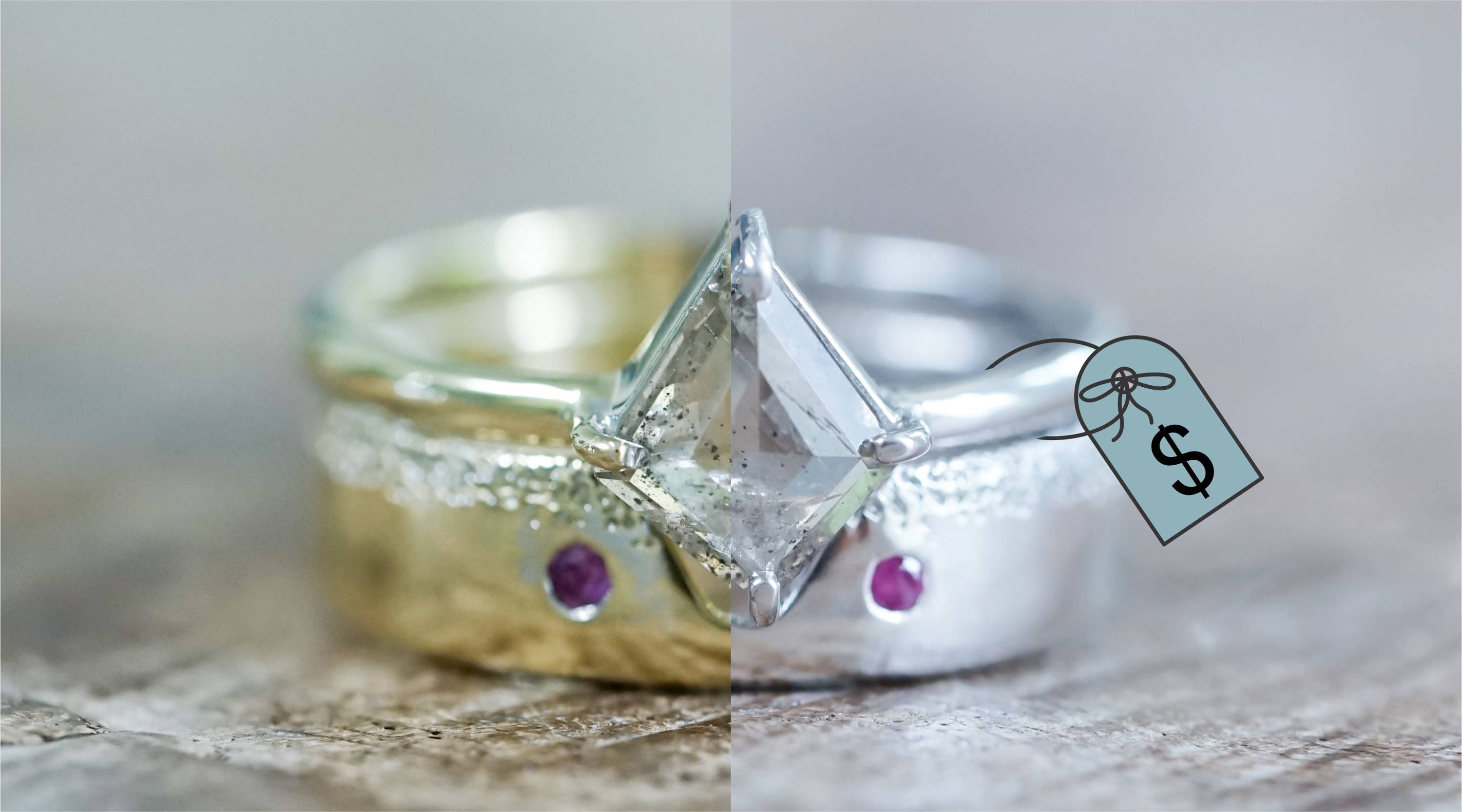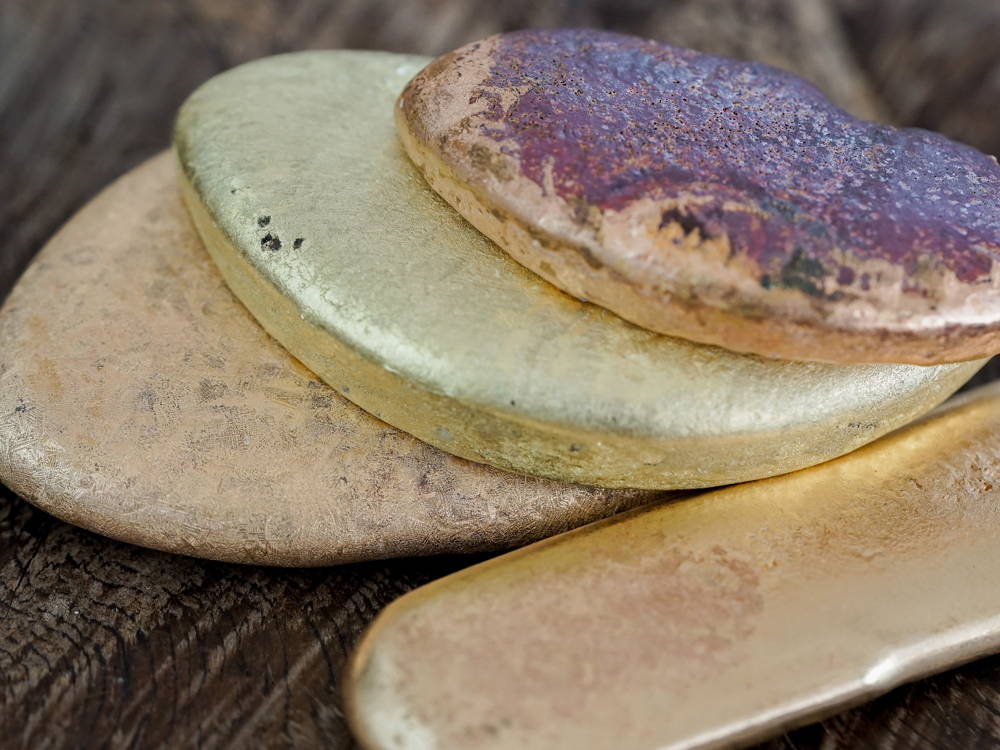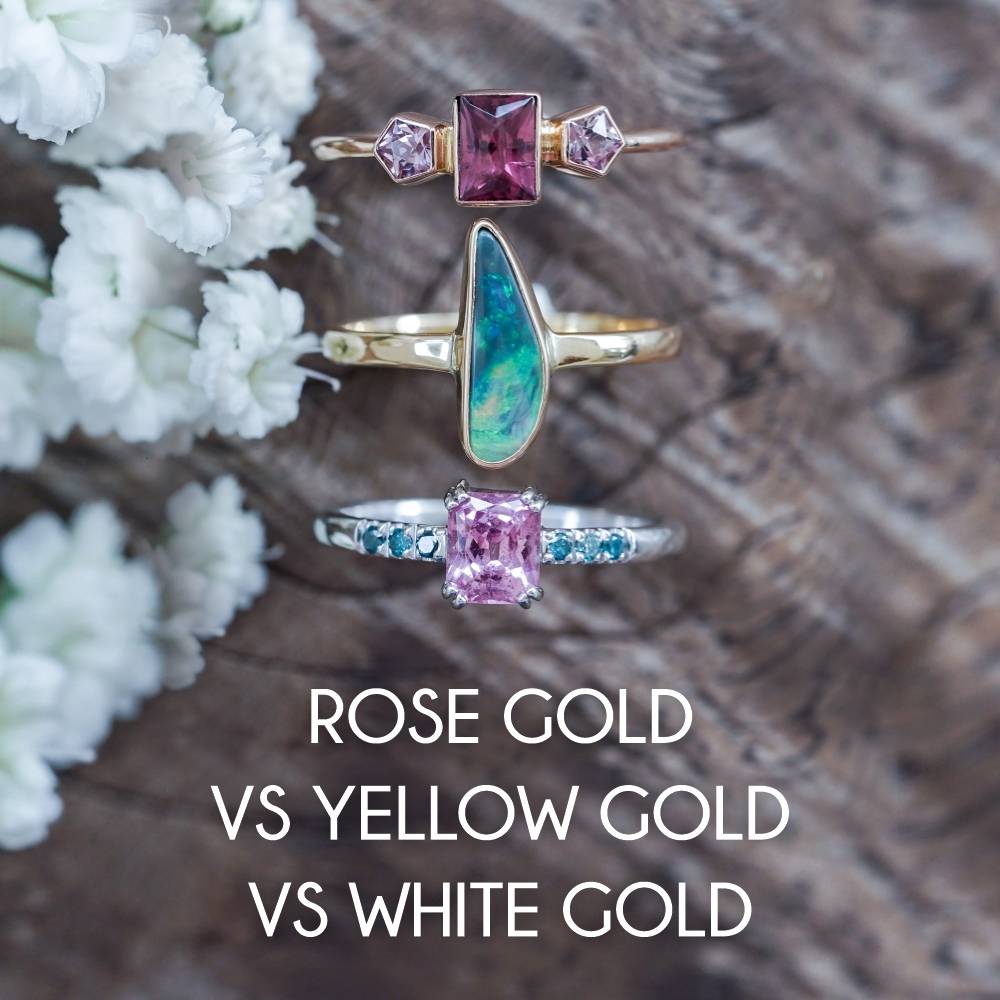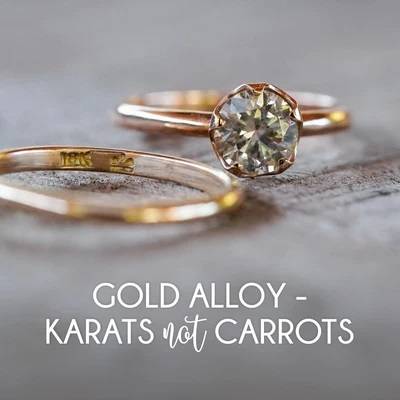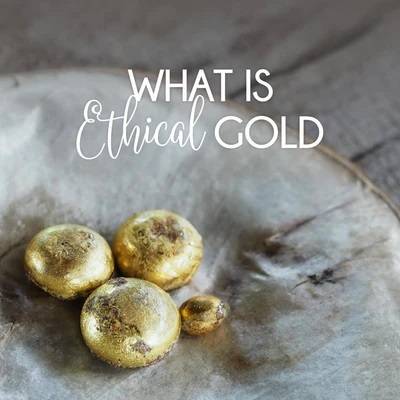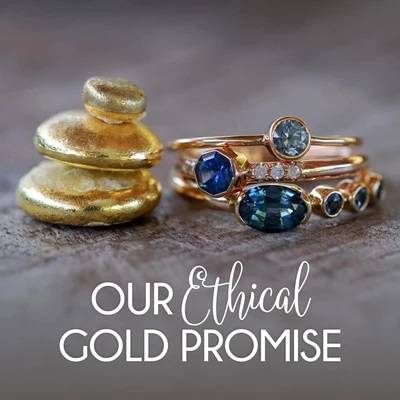Your Cart is Empty
Why does your
white gold turn yellow?
And how to fix it?
Updated February 2023
Is your white gold jewelry slowly fading to a yellowing shine?
Don't stress. It's not that your sebum or sweat is staining it, nor is it because you got a low quality piece of bling.
If you’ve been wondering if white gold can turn yellow or what makes white gold turn yellow, you're not alone!
TLDR; it's normal, because gold is not white, but a golden color.
If you’re wondering why your white gold wedding band or the prongs of your engagement ring are turning yellow, keep reading for the longform answer.
Is gold yellow?
Pure gold is always yellow. In fact, white gold does not exist in nature. There’s no such thing as pure white gold.
If gold is yellow, then how is white gold made?
Jewelers refer to gold in its pure form as 24 karat gold. Pure gold is too soft to be used in jewelry. That’s why it’s mixed with other metals that make it durable enough to be worn daily. These metals include copper, silver, nickel, palladium and zinc. The addition of other metals changes the color of the gold.
At Gardens of the Sun, we mix our own gold alloys with ethical gold, and add metals like copper and silver to it. We use 18 karat gold, which means that 18 out of 24 parts is pure gold. That’s 75%, and that’s also why in some countries, it gets a 750 stamp rather than an 18k stamp. The remaining 25% is where the mix of metals comes into play. A higher amount of copper will turn the gold to rose gold. Mixing it with silver, nickel or palladium will turn it to pale gold - or what we like to call white gold.
Does white gold use nickel?
Back in the day, people used nickel to give white gold its shiny white metal look. However, many people (myself included!) are allergic to nickel and most quality jewelers won't use nickel anymore. Likewise, Gardens of the Sun does not use any nickel in any of our jewelry.
At Gardens of the Sun, we used silver and zinc as the base alloy for our 18 karat white gold until late 2022. White gold based on zinc or silver still has a distinct golden glow.
In late 2022, we shifted to using palladium for our white gold. Palladium gives the gold a gray tone and less of a warm yellow hue. When using traditional artisanal smithing methods, it can be challenging to get the temperatures high enough to properly melt the palladium. When palladium isn't melted properly, it can affect the quality of the finished jewelry. We found a solution to this only in 2022.
What color is white gold?
Just like how there are many shades of white, white gold can have different colors. The color of white gold depends on the alloy, both which other metals it’s mixed with, and how many of these other metals are used.
For white gold as well as yellow gold and rose gold, 14 karat gold tends to be less golden in color than 18 karat gold, since it has a lower gold content.
IS WHITE GOLD RHODIUM PLATED?
Natural white gold isn’t exactly white. Historically, jewelers want white gold which can match the color of platinum - a rare metal with a hefty price tag. But white gold based on zinc or silver still has a distinct golden glow. So to achieve this white metal look, white gold is often plated with rhodium.
Does white gold fade? Does white gold tarnish? Does white gold rust?
When someone says white gold fades or tarnishes, they’re most likely referring to the rhodium plating fading to reveal the white gold underneath. And this white gold can look yellow - which is the reason why your jewelry was rhodium plated in the first place.
White gold itself does not change color, and the color will remain the same.
SO WHY DOES WHITE GOLD TURN YELLOW?
Most white gold jewelry is rhodium plated. As the rhodium plating is only a thin top layer, the rhodium plating tends to fade over time. This is especially true around prongs and corners, which get the most wear and tear.
Since the top layer has eroded, there’s no way to clean white gold that has turned yellow back to white gold. In fact, by obsessively cleaning and polishing it you would remove more of the rhodium plating, and reveal even more of the underlying yellow toned gold.
IS IT BAD IF WHITE GOLD TURNS YELLOW?
White gold doesn’t turn yellow because of oxidation and tarnish. It turns yellow because that’s its natural color.
So, it’s not ‘bad’ at all if white gold turns yellow! In fact, some people are loving this natural look more.
HOW CAN I PREVENT WHITE GOLD FROM TURNING YELLOW?
Bad news is: you can’t prevent white gold from turning yellow. The breakdown process is normal and inevitable. But you can slow down its process by taking good care of your jewelry. Try to avoid getting your white gold jewelry wet, soapy or dirty. Take it off before showering, swimming or splashing around in the ocean. Or you can opt for an alloy that’s less yellow to begin with.
Is there white gold that doesn’t turn yellow?
Whether or not white gold turns yellow depends on the base alloy, so the gold used underneath the rhodium plating. White gold itself does not change color, and the color will remain the same. So to prevent white gold changing color, choose a white gold alloy that's more white than yellow to begin with, and that does not need to be rhodium plated.
The first thing to do is ask your jeweler what kind of alloy they use for their white gold. If it’s a silver-based alloy, your jewelry will likely turn yellow over time. If it’s a nickel-based alloy, be aware it may trigger allergies. If it’s a palladium-based alloy, your white gold is unlikely to turn yellow.
Can you turn yellow gold into white gold, and vice versa?
In case you’re wondering whether you can turn yellow gold into white gold, or whether you can change white gold to yellow gold, the answer lies in the plating.
It is possible to add a yellow gold, rose gold or rhodium plating to any piece of jewelry you already own, unless there are very fragile gemstones that may not be able to withstand the electroplating process.
Keep in mind however, that over time the plating will wear off, and that this is not a permanent solution.
WHY IS WHITE GOLD MORE EXPENSIVE THAN YELLOW GOLD?
Creating white gold jewelry involves either additional steps (rhodium plating) or more expensive metals (palladium) that may be harder to work with. If your white gold jewelry contains palladium, remember palladium is a rare metal, and with a price tag. More expensive than a silver or nickel based alloy. Moreover, palladium is harder to work with than gold, so it’s more labor intensive. That’s why white gold is more expensive than yellow gold.
If your white gold is rhodium plated, there’s additional labor and materials involved in the rhodium plating process.
You can expect to pay more for a white gold ring than a yellow gold ring of the same quality.
WHAT’S SO SPECIAL ABOUT GARDENS OF THE SUN ETHICAL GOLD?
We partner with 25 artisanal indigenous women miners in Indonesian Borneo. We pay them a premium for their pledge against the use of mercury and cyanide. Plus, the miners operate legally without deforestation.
These women are our partners, not our employees - meaning they can make more profit for themselves on top of a stable income. In fact, studies by Yayasan Tambuhak Sinta, the University of British Columbia and Canadian International Resources and Development Institute found this partnership has created access to finance, increased income and more gender equality, women’s leadership and governance.
In the process, your gold jewelry avoided releasing an estimated 44 kg of mercury into the world.
Read more about our ethical gold.
WHY CHOOSE WHITE GOLD JEWELRY?
White gold is a popular choice of metal for engagement or wedding rings:
It suits both warm and cool-toned skin
Looks great with any gemstone color, especially white gemstones and diamonds come out best against white metal
It’s chic and elegant
Rhodium plating gives your jewelry a more scratch resistant layer
How to make white gold white again?
Are you looking to get that white metal glow back? This is not something you can fix at home. There's no other way around it - your white gold jewelry will have to be re-plated to get that platinum shine again. It's not a complicated process and your local jeweler should be able to do it for you, either in-house or at one of their partners.
If you purchased your ring from us, you're welcome to send it back and we'll gladly dip that piece in rhodium for you. In fact, we've done it for many of our clients. You can purchase a rhodium plating here.










